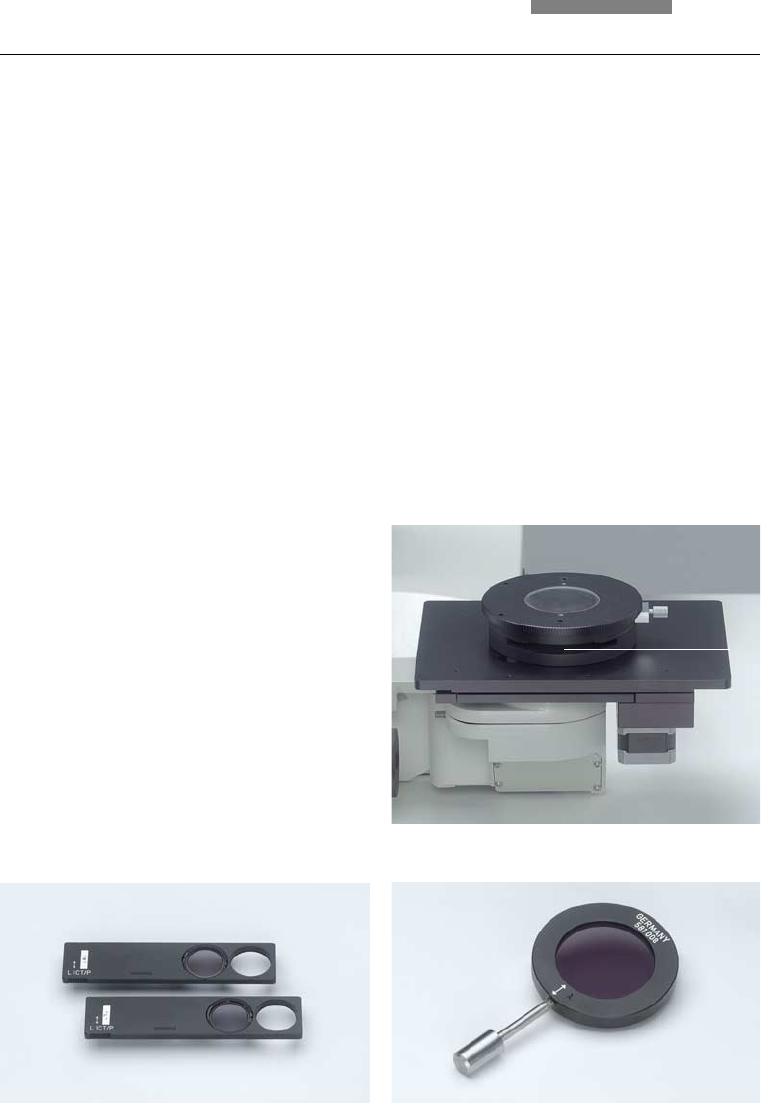
43
9. Accessories
Polarizing devices are available for the compari-
son macroscope for both the oblique incident il-
lumination and the transmitted light equipment.
For both polarizing devices, the analyzers in the
slider (Fig. 56) are identical. They are inserted
into the filter receptacles of the macroscope
holders (55.1). Their use is not necessary if the
device for coaxial illumination is installed with a
fixed analyzer between the macro-objectives
and the comparison device.
When using the rotating polarizers for the ob-
lique incident illumination, the focusing lenses
must be installed on the ends of the light guides
first. Then screw the rotating polarizers onto the
threads provided in front of the focusing lenses.
By rotating the polarizers, you can reduce dis-
ruption from points of light generated by shiny
object structures.
To use the polarizers with lambda plates for set-
ting up the transmitted light illumination, first
assemble the rotating stages ø 118 mm on the
cross-stages (→
page 31). In the bottom of the
rotating stages, there is a filter holder (57.1),
into which the polarizer with the lambda plate
9.7 Polarization Devices
(Fig. 58) must be inserted. This receptacle al-
lows 90° horizontal rotation of the polarizer with
lambda plate for setting the desired polarization
contrast.
For activation and deactivation of the lambda
plate, the polarizer must be rotated 180°.
Fig. 56 Analyzers Fig. 58 Polarization filter for transmitted light
Fig. 57 Rotating stage ø 118 mm
1 Filter slot for polarizer
1


















